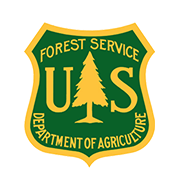Highlighted Media
The U.S. Department of Agriculture, Forest Service plans to use prescribed fire as a forest management tool throughout the month of May in the Allegheny National Forest. Burn operations are expected to begin Monday, May 12, though operations are weather-dependent. Prescribed fire will be implemented at the optimal time to achieve the best results.
Prescribed burns will be conducted within the Bradford District Fenced Units. These units are located in Forest County along Forest Road 249, northeast of Yellow Hammer, Pennsylvania. Anticipated burning will commence at the Coalbed 38002 unit, shown in the northwest corner of the attached map.
The overall project objectives are to promote and improve oak regeneration, wildlife habitat management, ecosystem health, and reduce hazardous fuels.
| Current as of | Thu, 05/08/2025 - 16:21 |
|---|---|
| Incident Time Zone | Eastern Standard Time |
| Incident Type | Prescribed Fire |
| Date of Origin | |
| Incident Time Zone | Eastern Standard Time |
| Incident Commander | USDA Forest Service, Allegheny National Forest |
| Incident Description | We conduct prescribed fires with the safety of the public and firefighters as our highest priority. Prescribed fires reduce the amount of hazardous fuels that, when left unburned, can lead to uncontrolled wildfires that could threaten human life and property. We use fire as a tool only when the parameters of our approved burn plan are met, including acceptable wind speed and direction, relative humidities, temperatures, fire danger, seasonal restrictions, and mitigation of potential smoke impacts. Fire management staff, in collaboration with forest resource specialists, identified several ecological objectives for the planned burn activities. Objectives include hazardous wildfire fuels reduction, improving forest health with vegetation diversity, and enhancing important wildlife habitat. Fires are a historic and natural process for some ecosystems in the Allegheny National Forest, grasslands and oak-hickory forests are two prime examples. Oak-hickory forests, which comprise approximately 16 percent of the Forest, require periodic fires to reduce competing undesirable vegetation, recycle soil nutrients, and stimulate the increased production of acorns, blueberries, blackberries, and other mast crops. White-tailed deer, turkey, butterflies, songbirds, grouse, snakes, turtles, and other wildlife species utilize burned areas for feeding, nesting, warming, and a place to raise their young. |
| Coordinates |
41° 37' 03.2'' Latitude
-79° 16' 33.6
'' Longitude
|
| Size | 38 Acres |
|---|

 InciWeb
InciWeb